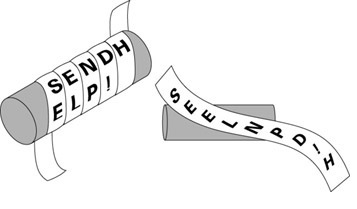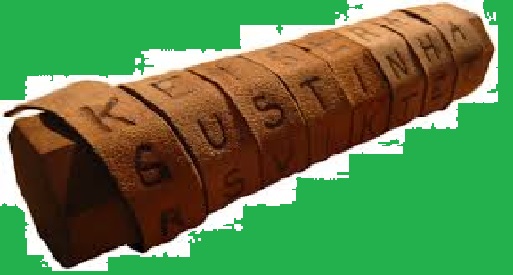The first-ever known military cryptographic device, the Spartan scytale, is a form of transposition. This device dates back to the fifth century B.C. The scytale is a wooden staff around which a strip of leather is wound. The sender would write the message along the length of the scytale and then unwind the strip. The leather strip would then appear to carry a list of meaningless letters. To recover the message, the receiver would simply wrap the leather strip around a scytale of the exact same diameter as the one used by the sender (Singh 1999).


For very short messages, such as a single word, transposition is relatively insecure because there are only a limited number of ways of rearranging a handful of letters. For example, three letters can be arranged in only six different ways (fry, fyr, ryf, rfy, yrf, yfr). However, as the number of letters gradually increases, the number of possible arrangements rapidly explodes, making it impossible to get back to the original message unless the exact scrambling process is known. Letters in a sentence containing 35 letters can be rearranged in more than 50,000,000,000,000,000,000,000,000,000,000 ways.
An important note is in order for transposition to be effective, the rearrangement of letters needs to follow a straightforward system, one that has been previously agreed by sender and receiver but kept secret from the enemy.
For example, it is possible to send messages using the "rail fence" transposition, in which the message is written with alternating letters on separate upper and lower lines. The sequence of letters on the lower line is then tagged on at the end of the sequence on the upper line to create the final encrypted message.
If you wanted to encrypt "charge the hill" you could use the following rail fence:
This would give the following ciphertext: CAGTEILHREHHL
(If you are interested in learning more about the Rail Fence Cipher (along with other transposition ciphers such as the Latin Square,) click: Rail Fence Cipher )